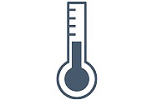The study of electrical processes within the atmosphere1. Encompasses electrical phenomena, regarded collectively, which occur in the Earth's atmosphere, including cloud to ground and intracloud lightning, electric field measurements.
All liquid or solid phase aqueous particles that originate in the atmosphere and fall to the earth's surface. It is also the amount, usually expressed in millimeters or inches of liquid water depth, of the water substance that has fallen at a given point over a specified period of time2. The GHRC archive includes both satellite and field campaign measurements of precipitation rate, amount, and droplet size.
Air in motion relative to the surface of the Earth4. GHRC holdings include measurements of ocean surface wind speed and direction from satellite microwave radiometers, and vertical wind profiles from airborne instruments and dropsondes.
Water present in the atmosphere in gaseous form; one of the most important of all constituents of the atmosphere. Its amount varies widely in space and time due to the great variety of both "sources" of evaporation and "sinks" of condensation that provide active motivation to the hydrologic cycle. Water vapor is important not only as the raw material for cloud and rain and snow, but also as a vehicle for the transport of energy (latent heat) and as a regulator of planetary temperatures through absorption and emission of radiation, most significantly in the thermal infrared (the greenhouse effect)3. GHRC archive holds measurements for water vapor, humidity and precipitable water.
Measure of temperature at different levels of the Earth's atmosphere. It is governed by many factors, including incoming solar radiation, humidity and altitude5 measurements of temperature at different levels of the Earth’s atmosphere. GHRC holds satellite-derived temperature data from the sea surface level to ~41km or 2.5mb.
Clouds consist of microscopic droplets of liquid water (warm clouds), tiny crystals of ice (cold clouds), or both (mixed phase clouds). Cloud droplets initially form by the condensation of water vapor onto condensation nuclei when the supersaturation of air exceeds a critical value6. GHRC has satellite-derived measurements of cloud liquid water and cloud top heights, as well as airborne observations of cloud hydrometeors.












